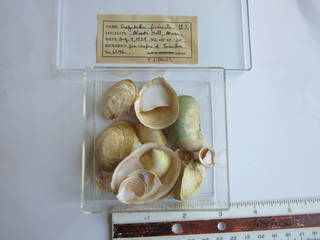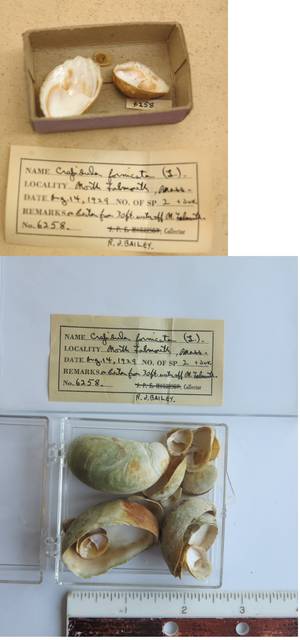WoRMS taxon details
Crepidula fornicata (Linnaeus, 1758)
138963 (urn:lsid:marinespecies.org:taxname:138963)
- Subspecies Crepidula fornicata cymbaeformis Conrad, 1844 † accepted as Crepidula cymbaeformis Conrad, 1844 † (unaccepted > superseded rank)
- Variety Crepidula fornicata var. cruzana Nowell-Usticke, 1959 accepted as Crepidula cruzana Nowell-Usticke, 1959 (unaccepted > superseded combination, invalid: infrasubspecific name. Validated as Crepidula cruzana by Nowell-Usticke in 1971)
- Variety Crepidula fornicata var. garnot Dautzenberg, 1891 accepted as Crepidula porcellana Lamarck, 1801 (synonym)
- Variety Crepidula fornicata var. ponderosa (H. C. Lea, 1843) † accepted as Crepidula aculeata ponderosa (H. C. Lea, 1843) †
- Subspecies Crepidula fornicata rostrata Conrad, 1870 † (uncertain > unassessed, preoccupied by C. B. Adams, 1852)
page(s): 658 [details] Available for editors
Distribution In the older fauna lists (e.g. De Malzine (1867), Colbeau (1868), Pelseneer (1881b), Maitland (1897) and Vonck (1933)) ...
For a discussion on the way of distribution and introduction see: Adam, W.; Leloup, E. (1934). Sur la présence du gastéropode Crepidula fornicata (Linné, 1758) sur la côte belge. [Occurrence of the gastropod Crepidula fornicata (Linné, 1758) at the Belgian coast.] Bull. Mus. royal d'Hist. Nat. Belg./Med. Kon. Natuurhist. Mus. Belg. 10(45): 1-6. [details]
![]() The webpage text is licensed under a Creative Commons
Attribution 4.0 License
The webpage text is licensed under a Creative Commons
Attribution 4.0 License
Nomenclature
page(s): 658 [details] Available for editors
original description (of Crepidula virginica Conrad, 1870 †) Conrad, T. A. (1870). Notes on Recent and fossil shells, with descriptions of new species. <em>American Journal of Conchology.</em> 6(1): 71-78., available online at http://biodiversitylibrary.org/page/15853894
page(s): 78 [details]
original description (of Crepidula densata Conrad, 1843) Conrad, T. A. (1843). Descriptions of a new genus, and of twenty-nine new Miocene, and one Eocene fossil shells of the United States. <em>Proceedings of the Academy of Natural Sciences of Philadelphia.</em> 1(30-31): 305-311., available online at https://www.biodiversitylibrary.org/page/26286360
page(s): 311 [details]
original description (of Crypta nautarum Mörch, 1877) Mörch [Mørch], O. A. L. (1877). Synopsis molluscorum marinorum Indiarum occidentalium imprimis Insularum danicarum. <em>Malakozoologische Blätter.</em> 24: 14-66, 93-123., available online at http://biodiversitylibrary.org/page/15854685
page(s): 103-104; note: name credited to Humphrey (1797) [details]
Ecology
ecology source Richard J., Huet M., Thouzeau G. & Paulet Y.-M. (2006). Reproduction of the invasive slipper limpet, <i>Crepidula fornicata</i>, in the Bay of Brest, France. <em>Marine Biology.</em> 149(4): 789-801., available online at https://doi.org/10.1007/s00227-005-0157-4 [details]
Other
context source (Schelde) Maris, T., O. Beauchard, S. Van Damme, E. Van den Bergh, S. Wijnhoven & P. Meire. (2013). Referentiematrices en Ecotoopoppervlaktes Annex bij de Evaluatiemethodiek Schelde-estuarium Studie naar “Ecotoopoppervlaktes en intactness index”. [Reference matrices and Ecotope areas Annex to the Evaluation methodology Scheldt estuary Study on “Ecotope areas and intactness index”. <em>Monitor Taskforce Publication Series, 2013-01. NIOZ: Yerseke.</em> 35 pp. (look up in IMIS) [details]
additional source Hoagland, K. E. (1979). The behavior of three sympatic species of <i>Crepidula</i> (Gastropoda: Prosobranchia) from the Atlantic, with implications for evolutionary ecology. <em>The Nautilus.</em> 93(4): 143-149, figs. 1-2., available online at https://www.biodiversitylibrary.org/page/8275205 [details]
additional source Abbott, R. T. (1974). <i>American seashells. The marine Mollusca of the Atlantic and Pacific coast of North America</i>. ed. 2. Van Nostrand, New York. 663 pp., 24 pls. [October 1974]. (look up in IMIS) [details]
additional source Mansfield, W. C. (1930). Miocene gastropods and scaphopods of the Choctawhatchee Formation of Florida. <em>Florida State Geological Survey, Bulletin.</em> 3: 1-185, 21 pls., available online at https://ufdc.ufl.edu/UF00000437/00001
page(s): 116-118 [details]
additional source Hoagland, K.E. 1977. Systematic review of fossil and recent <i>Crepidula</i> and discussion of the evolution of the Calyptraeidae. <i>Malacologia</i>, 16(2): 353-420., available online at http://biodiversitylibrary.org/page/13131436 [details]
additional source McNeill, G.; Nunn, J.; Minchin, D. (2010). The slipper limpet Crepidula fornicata Linnaeus, 1758 becomes established in Ireland. Aquatic Invasions 5(Suppl. 1): S21-S25., available online at http://www.aquaticinvasions.net/2010/Supplement/AI_2010_5_S1_McNeill_etal.pdf [details]
additional source Blanchard, M. (1997). Spread of the slipper limpet <i>Crepidula fornicata</i> (L. 1758) in Europe. Current state and consequences. <em>Scientia Marina.</em> 61 (Sup 2): 109-118. [details] Available for editors
additional source Maury, C. J. (1925). A further contribution to the paleontology of Trinidad (Miocene Horizons). <em>Bulletins of American Paleontology.</em> 10(42): 153-402, pls. 1-43., available online at https://www.biodiversitylibrary.org/page/32509152
page(s): 396 [details]
additional source Collin, R. (1995). Sex, size, and position: A test of models predicting size at sex change in the protandrous gastropod <i>Crepidula fornicata</i>. <em>American Naturalist.</em> 146(6): 815-831., available online at http://www.stri.si.edu/sites/publications/PDFs/Collin_AmNat.pdf [details]
additional source Rawlings, T. A.; Aker, J. M.; Brunel, P. (2011). Clarifying the Northern Distributional Limits of the Slipper Limpet Crepidula fornicata in the Northwestern Atlantic. <em>American Malacological Bulletin.</em> 29(1-2): 105-119., available online at https://doi.org/10.4003/006.029.0202 [details] Available for editors
additional source Adams, C. B. (1839). Observations on some species of the marine shells of Massachusetts, with descriptions of five new species. <em>Boston Journal of Natural History.</em> 2: 262-288, pl. 4., available online at https://www.biodiversitylibrary.org/page/32266920
page(s): 278-279 [details]
additional source Collin R. (2019). Calyptraeidae from the northeast Pacific (Gastropoda: Caenogastropoda). <em>Zoosymposia.</em> 13: 107-130., available online at http://dx.doi.org/10.11646/zoosymposia.13.1.12
page(s): 117, figs 1C, 4C [details]
additional source Stearns, R. E. C. (1897). Quarter-jacks and jingles. <em>The Nautilus.</em> 11(4): 38-40., available online at https://www.biodiversitylibrary.org/page/1774612 [details]
additional source Winkley, H. W. (1892). A few additional notes on <i>Crepidula</i>. <em>The Nautilus.</em> 6(6): 63., available online at https://www.biodiversitylibrary.org/page/42789015 [details]
additional source Johnson, C. W. (1926). The abundance of <i>Crepidula fornicata</i> L. at Nantucket, Mass. <em>The Nautilus.</em> 40(2): 68., available online at https://www.biodiversitylibrary.org/page/8523201 [details]
additional source Orton, J. H. (1927). Is the American slipper-limpet (<i>Crepidula fornicata</i>) an oyster pest?. <em>The Nautilus.</em> 40(3): 102-103., available online at https://www.biodiversitylibrary.org/page/8523237 [details]
 Present
Present  Present in aphia/obis/gbif/idigbio
Present in aphia/obis/gbif/idigbio  Inaccurate
Inaccurate  Introduced: alien
Introduced: alien  Containing type locality
Containing type locality
Introduced species abundance in United Kingdom part of the Celtic Sea (Marine Region) : Common [details]
Introduced species abundance in United Kingdom part of the English Channel (Marine Region) : Common [details]
Introduced species abundance in United Kingdom part of the North Sea (Marine Region) : Common [details]
Introduced species impact in Celtic Sea (IHO Sea Area) : Other impact - undefined or uncertain [details]
Introduced species impact in Denmark (Nation) : Other impact - undefined or uncertain [details]
Introduced species impact in France (Nation) : Other impact - undefined or uncertain [details]
Introduced species impact in Germany (Nation) : Other impact - undefined or uncertain [details]
Introduced species impact in Greece (Nation) : Other impact - undefined or uncertain [details]
Introduced species impact in Ireland (Nation) : Other impact - undefined or uncertain [details]
Introduced species impact in Irish part of the Irish Sea and St. George's Channel (Marine Region) : Other impact - undefined or uncertain [details]
Introduced species impact in United Kingdom (Nation) : Other impact - undefined or uncertain [details]
Introduced species impact in Norway (Nation) : Other impact - undefined or uncertain [details]
Introduced species impact in Spain (Nation) : Other impact - undefined or uncertain [details]
Introduced species impact in Belgian part of the North Sea : Other impact - undefined or uncertain [details]
Introduced species impact in France (Nation) : Other impact - undefined or uncertain [details]
Introduced species impact in North Atlantic Ocean (IHO Sea Area) : Other impact - undefined or uncertain [details]
Introduced species impact in Norway (Nation) : Other impact - undefined or uncertain [details]
Introduced species impact in United Kingdom part of the Celtic Sea (Marine Region) : Outcompetes native species for resources and/or space [details]
Introduced species impact in United Kingdom part of the North Sea (Marine Region) : Water abstraction or nuisance fouling [details]
Introduced species remark In Maltese part of the Mediterranean Sea - Eastern Basin (Marine Region) : Casual visitor to marine waters off Malta [details]
Introduced species vector dispersal in Belgian part of the North Sea: Ships: accidental with ballast water, sea water systems, live wells or other deck basins [details]
Introduced species vector dispersal United States part of the North Pacific Ocean (Marine Region) Aquaculture: deliberate [details]
Introduced species vector dispersal in Norway (Nation) : Ships: accidental as attached or free-living fouling organisms [details]
Introduced species vector dispersal in Spain (Nation) : Debris: transport of species on human generated debris [details]
Introduced species vector dispersal in Norway (Nation) : Fisheries: accidental with deliberate translocations of fish or shellfish [details]
Introduced species vector dispersal in United Kingdom part of the North Sea (Marine Region) : Fisheries: accidental with deliberate translocations of fish or shellfish [details]
Introduced species vector dispersal in Maltese part of the Mediterranean Sea - Eastern Basin (Marine Region) : Fisheries: accidental with deliberate translocations of fish or shellfish [details]
Introduced species vector dispersal in Belgian part of the North Sea: Aquaculture: accidental [details]
Introduced species vector dispersal in Belgian part of the North Sea: Ships: accidental with ballast water, sea water systems, live wells or other deck basins [details]
Introduced species vector dispersal Greek part of the Aegean Sea (Marine Region) Aquaculture: accidental [details]
Introduced species vector dispersal in United Kingdom (Nation) : Shipping [details]
Dimensions maximum size of 20 to 50 mm [details]
Distribution In the older fauna lists (e.g. De Malzine (1867), Colbeau (1868), Pelseneer (1881b), Maitland (1897) and Vonck (1933)) Crepidula fornicata is absent, contrary to nowadays. This species was introduced only in the thirties
For a discussion on the way of distribution and introduction see: Adam, W.; Leloup, E. (1934). Sur la présence du gastéropode Crepidula fornicata (Linné, 1758) sur la côte belge. [Occurrence of the gastropod Crepidula fornicata (Linné, 1758) at the Belgian coast.] Bull. Mus. royal d'Hist. Nat. Belg./Med. Kon. Natuurhist. Mus. Belg. 10(45): 1-6. [details]
Habitat infralittoral and circalittoral of the Gulf and estuary [details]
| Language | Name | |
|---|---|---|
| Danish | tøffelsnegl | [details] |
| Dutch | slippertjeslippermuiltjegewoon muiltjeAmerikaans muiltje | [details] |
| English | slipper shellslipper limpetoyster-pestcommon Atlantic slippersnailAmerican slipper-limpetAmerican slipper limpet | [details] |
| French | crépidule pontéecrépiduleberlingot de mer | [details] |
| German | PorzellanpantoffelPantoffelschneckeAmerikanische Pantoffelschnecke | [details] |
| Swedish | ostronpest | [details] |
European Network on Invasive Alien Species (NOBANIS) - Crepidula fornicata
Global invasive species database - Crepidula fornicata
Marine Life Information Network - UK
To Barcode of Life (74 barcodes)
To Biodiversity Heritage Library (448 publications)
To Dyntaxa
To European Nucleotide Archive, ENA (Crepidula fornicata)
To GenBank (40117 nucleotides; 319 proteins) (from synonym Patella fornicata Linnaeus, 1758)
To GenBank (40117 nucleotides; 319 proteins)
To Global Biotic Interactions (GloBI)
To Global Invasive Species Database (GISD)
To Information system on Aquatic Non-Indigenous and Cryptogenic Species (AquaNIS)
To Malacopics (Crepidula fornicata (Linnaeus, 1758) Bailiwick of Guernsey, Alderney, St. Anne Harbo...
To Malacopics (Crepidula fornicata (Linnaeus, 1758) Netherlands, Friesland, Ameland, Nes, near beac...
To Malacopics (Crepidula fornicata (Linnaeus, 1758) Netherlands, Zeeland, Zuid-Beveland, Yerseke, a...
To Malacopics (Crepidula fornicata (Linnaeus, 1758) United Kingdom, East Sussex, Hastings, beached,...
To Malacopics (Crepidula fornicata (Linnaeus, 1758))
To Malacopics (Crepidula fornicata (Linnaeus,1758) United States, Washington, Nisqually Reach)
To Niet-inheemse soorten Belgisch deel Noordzee en aanpalende estuaria (in Dutch)
To NMNH Extant Collection (USNM 1437043)
To NMNH Extant Collection (USNM 1437044)
To PESI
To PESI (from synonym Patella fornicata Linnaeus, 1758)
To PESI (from synonym Crepidula densata Conrad, 1843)
To USNM Invertebrate Zoology Mollusca Collection
To Yale Peabody Museum of Natural History (YPM IZ 101774)
To ITIS



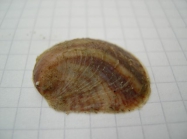
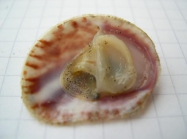
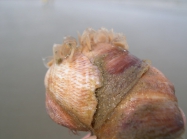
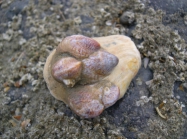
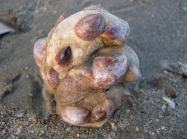
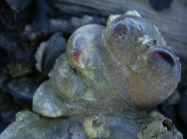



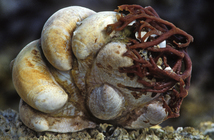
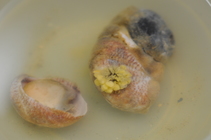
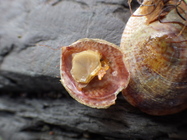

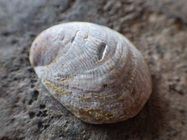
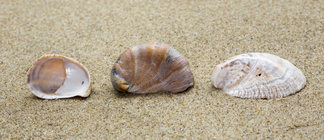
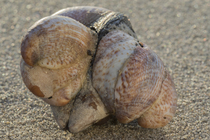

.jpg)
.jpg)
.jpg)



